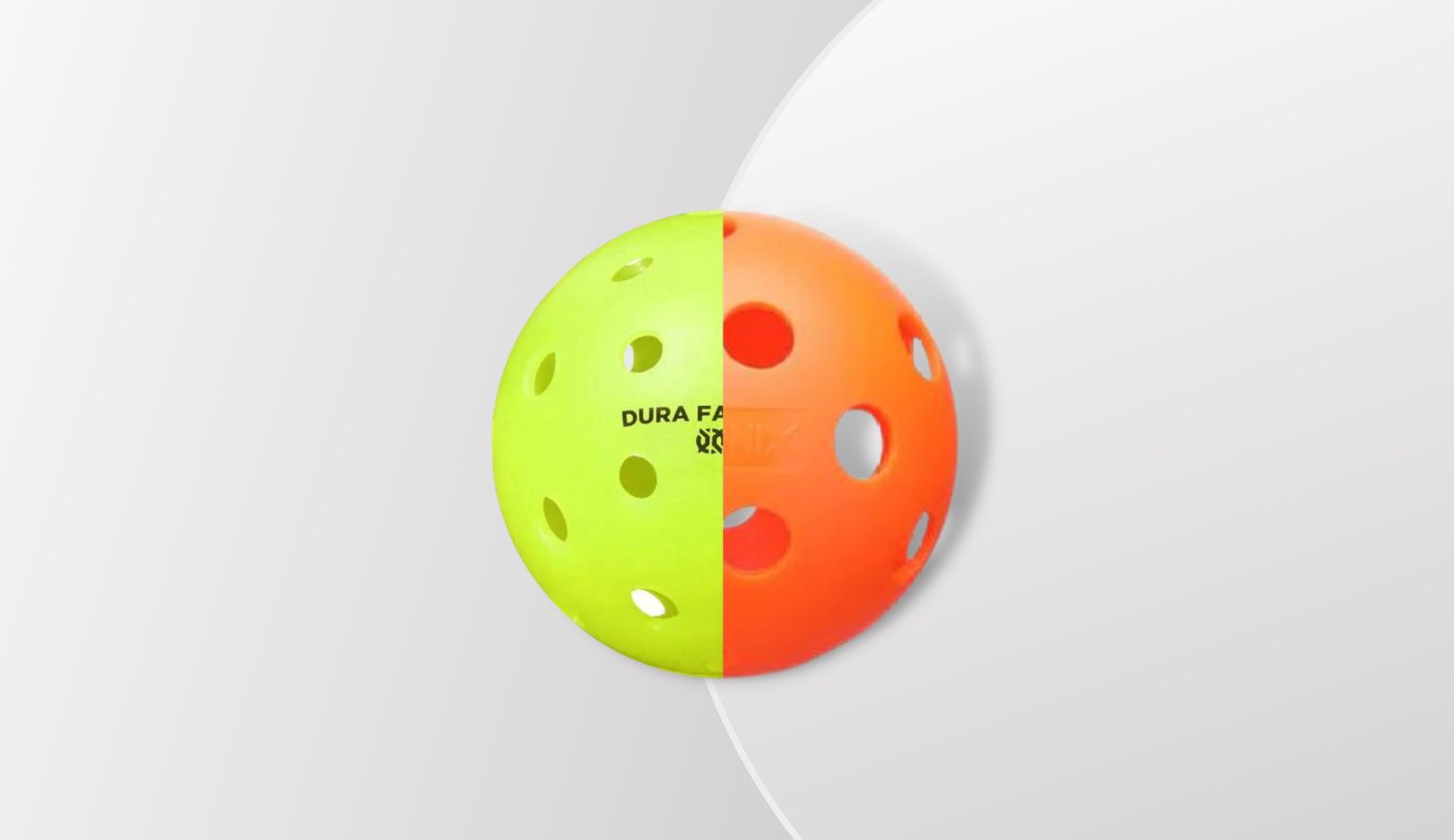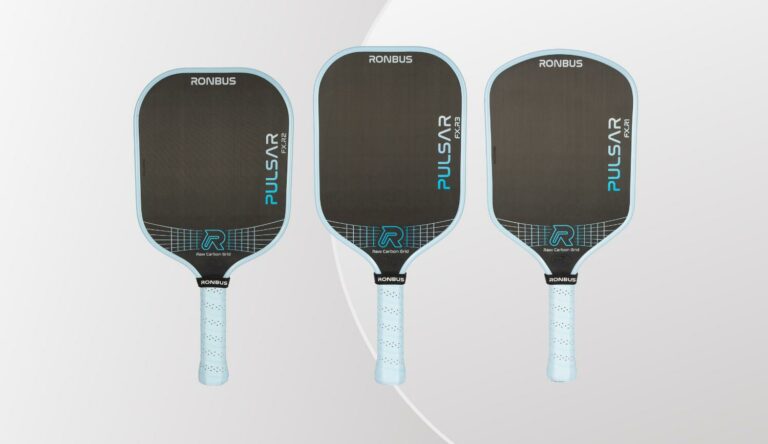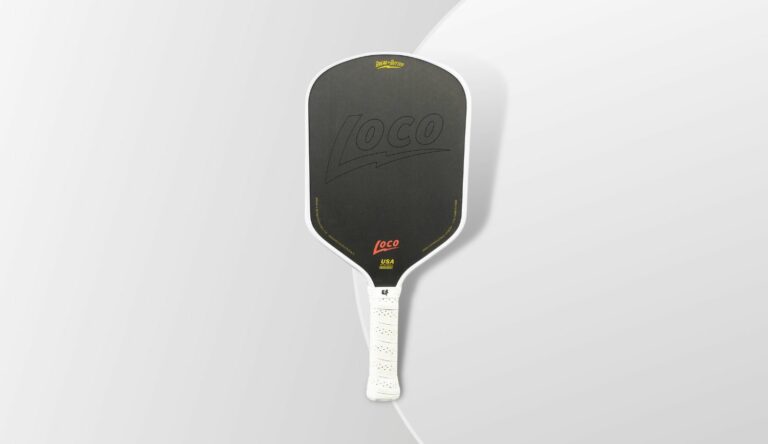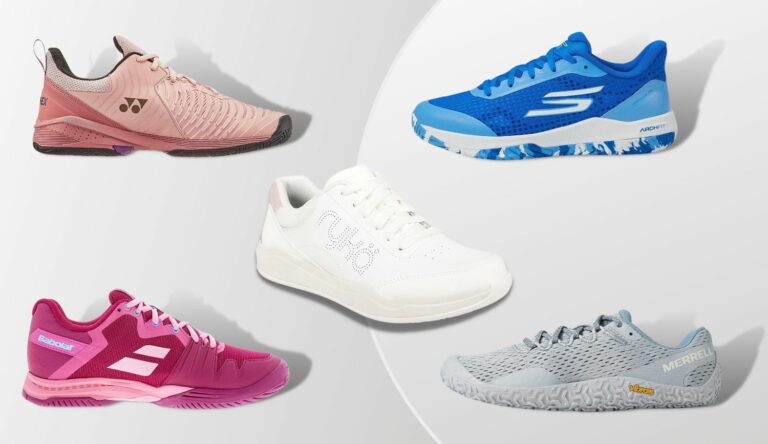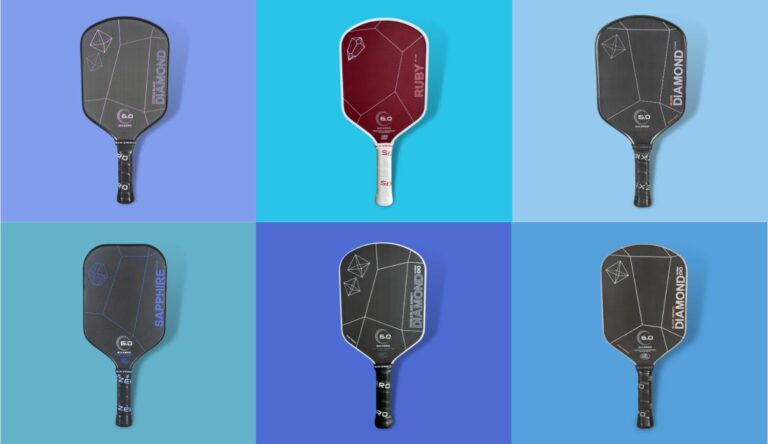You might be wondering – what are the functional differences between indoor and outdoor pickleballs?
There are many noticeable differences between them, which you want to know if you’re serious about pickleball. Certain communities and skill levels all have their specific ball preferences, so it pays to be in-the-know.
Let’s get you caught up to speed.
Contents
A Summary of indoor/outdoor ball differences:
- Outdoor balls are made to play on rougher surfaces like cement and tennis courts. Indoor balls are made o play on smoother surfaces like basketball gyms and wooden/composite floors.
- Outdoor pickleballs are typically heavier and harder than indoor pickleballs. They come off your paddle with more power but are harder to control. Indoor balls are softer and thinner, making them travel slower while providing more control.
- Outdoor balls have more holes than indoor balls and the holes are smaller. This helps them avoid being impacted by the wind. It also makes them play harder and faster. Indoor balls have fewer, bigger holes meant to catch the hardwood surface and prevent skidding and sliding.
- Outdoor balls tend to crack more easily, particularly in cold climates, while indoor balls last longer but are more prone to developing soft spots. We have a post on pickleball durability.
Can you use outdoor balls on an indoor court?
Yes, outdoor balls can and are often used for indoor play. But only when facility has indoor courts that are surfaced similarly to outdoor courts.
The most important metric when deciding on a ball type is the court surface, not whether a court is designated as indoor or outdoor.
There are good reasons that you shouldn’t use outdoor balls on truly indoor balls surfaces (i.e basketball courts and other indoor gym wood floor surfaces). Indoor balls were specifically made for these floors for a reason.
Outdoor balls don’t get the traction you’d want when played on true indoor surfaces. They skip and skid like crazy and you won’t get the great bounce mechanic that you normally get with outdoor balls. Especially if the ball is new. They can also potentially damage wood floor surfaces.
There’s really no good reason to use outdoor balls on a true indoor gym court unless you’re obsessed with power and speed, or if you’re training for an outdoor tournament and only have an indoor court to use.
Indoor balls end up bouncing similarly to outdoor balls when used on their proper surface. So it’s simply better to use them when playing on true indoor surfaces.
Regardless, people will still use their Franklin X-40s on wooden gymnasium floors. Feel free to recommend a better indoor ball alternative to them.
Can you use indoor balls on an outdoor court?
Yes, you can use indoor balls when playing outdoors.Just be aware that they’ll never be as good to use as an outdoor ball will be. This is because indoor balls are designed for unideal surfaces (indoor gyms) and don’t adapt well outside.
If you prefer soft and slow balls, and there’s very little or no wind, then it should be okay to use an indoor ball outside. But just okay.
If it’s windy, good luck. Its larger holes and lighter weight will make it fall fly around like crazy in the wind.
You also would have to convince the people you’re playing with. If it’s all novices, they might not know or care the difference. But experienced players prefer hard balls, and a soft indoor ball on an outdoor court won’t be up their alley.
Are indoor our outdoor pickleballs more enjoyable to play with?
Most people prefer outdoor balls and find them more enjoyable to use than indoor balls.
If you like to play hard, fast, and at a high level, then outdoor balls will be the best for you. They’re heavier, thicker, and their hole amount and size allows them to perform better in the elements.
Many people complain that indoor balls feel “dead” and will want to swap them out for livelier balls, namely hard outdoor options. Though if they’re staying indoors, it’s better to pick and use one of the harder indoor balls.
One of the reasons that outdoor balls feel better is because outdoor court surfaces are better to play on than indoor gymnasium surfaces in general. So it makes sense that the ball designed for the superior court would be preferred over the ball designed for the inferior one.
If you enjoy a softer ball and game with a preference for control and dinking, then you might enjoy indoor balls more. The softness makes them easier to control and dink with.
Just be aware that most players want a ball that shoots fast and won’t share your affinity for playing with a soft ball.
If you have to play with harder balls, consider getting a paddle that improves your control.
Choosing the right indoor and outdoor balls for you
Outdoor. If you play on outdoor courts I recommend the Dura Fast 40 or X-40 pickleballs. They’re the top two outdoor pickleballs and the brands used most in tournaments, especially by the pros.
Just don’t use them in weather below 45 degrees because they’re crack easily in the cold. If it’s cold out, use Core or Onix outdoor balls.
Core and Onix are next best balls outdoor balls to play with and won’t crack like the Duras and X-40s. They’re slightly softer more forgiving to play with, too. Because of this you see them at lower level tournaments.
Indoor. For indoor balls, the Onix Fuse is by far the most popular and well-liked ball. Next are the Gamma Photon and Penn 26.
We’ve written in-depth about the best indoor and outdoor balls, so go check that page out if you want to know everything about the top pickleballs on the market.
Conclusion
Now you know the key differences between indoor and outdoor pickleballs.
To sum up, you should be using a good outdoor ball on any outdoor court surface like concrete or pickleball/tennis courts, even if that surface is placed indoors. And you should use an indoor ball whenever you’re playing on a true indoor court surface like a gymnasium or other wooden floor.
Ideally, we’d stop referring to balls based on the covering of the court and instead determined it purely on the playing surface, because that’s what actually matters.
And, in the end, it all comes down to preference. By all means experiment if you’d like to, but don’t be surprised if your X-40 balls plays like ice cubes on hardwood or gym flooring. Or if your beloved indoor ball takes off with a wind gust when played outside.
